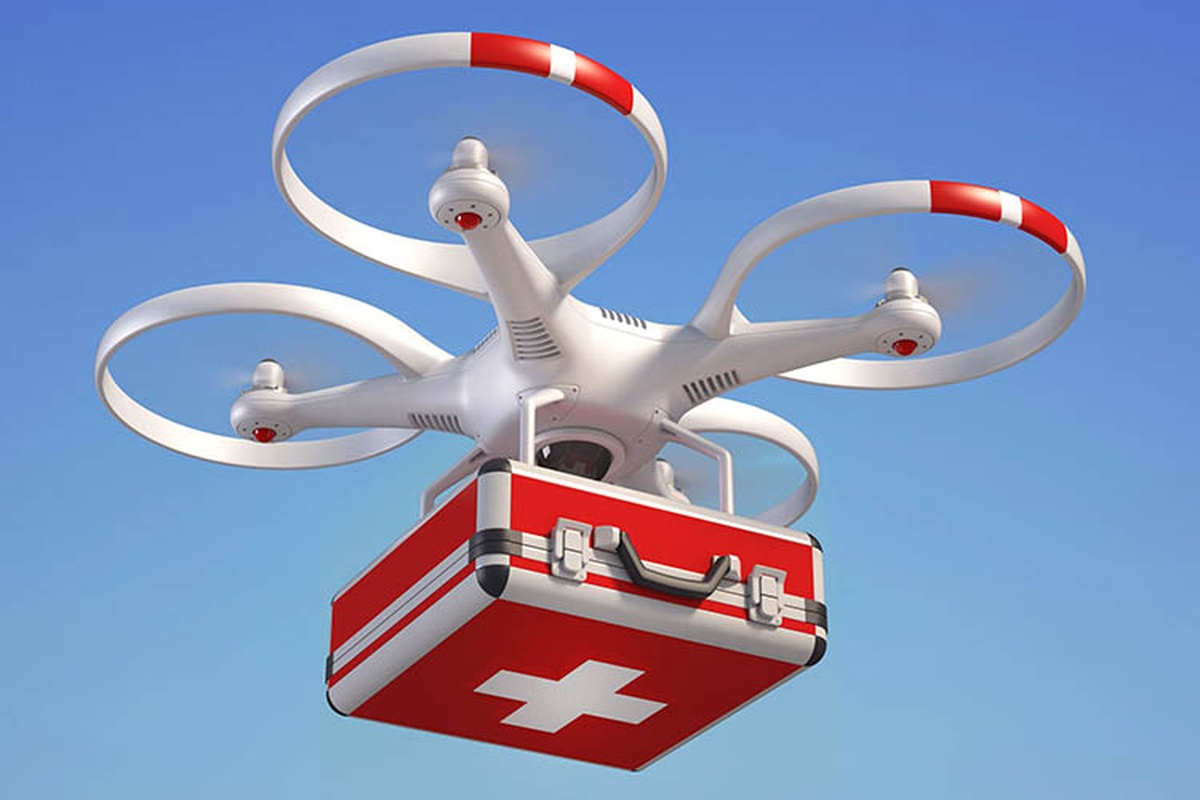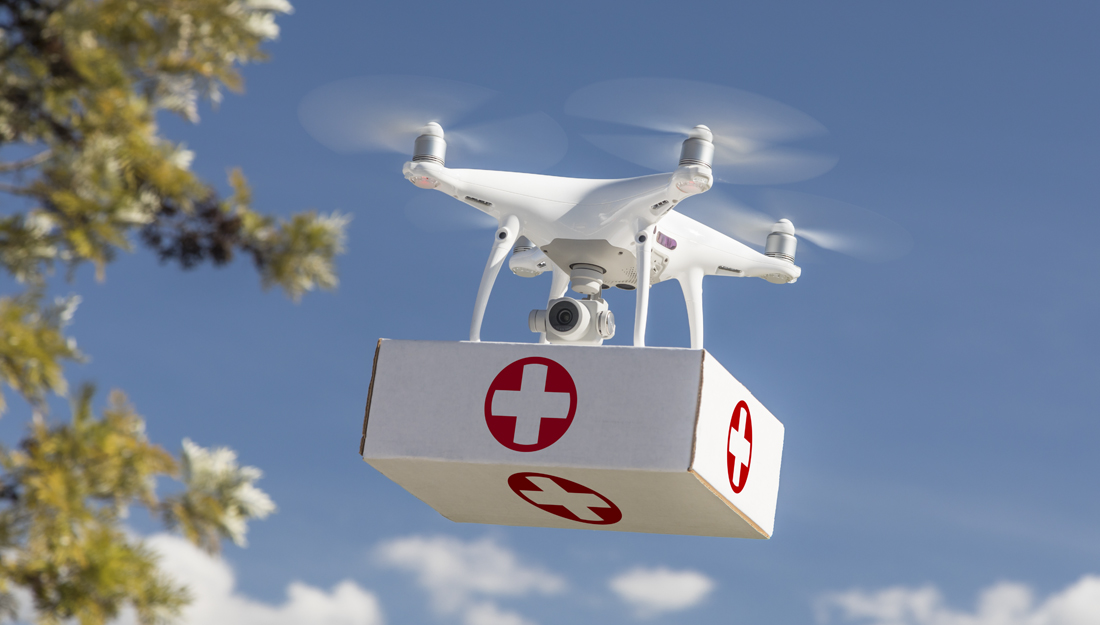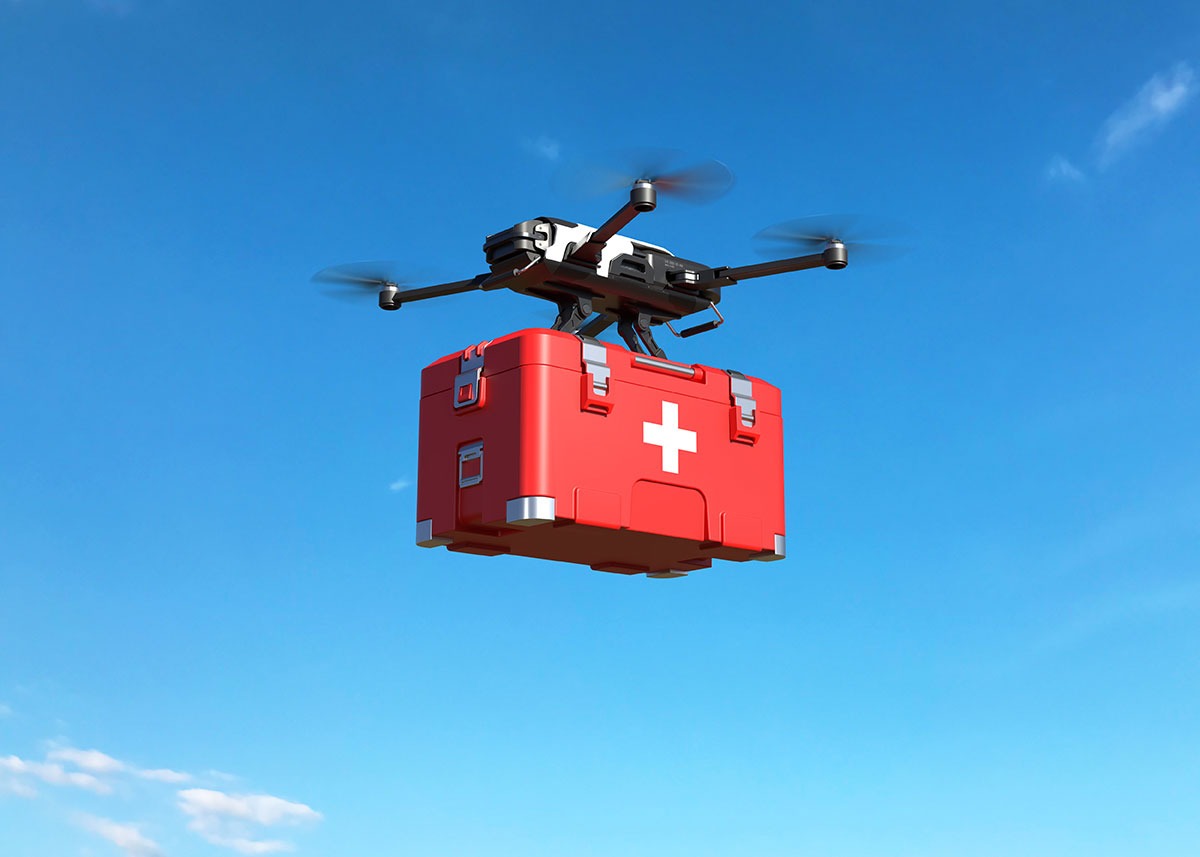The Use of Drones in Medical Transport: Delivering Critical Supplies and Medications
Are you ready for a revolutionary new way to deliver medical supplies? Drones may soon become a common sight in the skies as they are tested for delivering much needed medical equipment to remote areas. In fact, recently there has been a lot of excitement around using drones to deliver medical supplies because they have the ability to quickly get to areas where traditional transportation methods fail.
Drones Delivering Medical Supplies to be Trialled
The use of drones for delivering medical supplies is an idea that many have been championing for several years now. The idea has been received with mixed reactions, with some people concerned about privacy issues and others excited about the possibility of being able to access medical supplies quickly and easily even if they live in isolated areas with no proper infrastructure.
Recently there have been successful trials of the use of drones for delivering medical supplies. Trials were conducted in Rwanda and Madagascar, and the results showed that drones could be used effectively in the delivery of medical supplies such as vaccines, blood, and medical equipment.
Abstract
The use of drones for delivering medical supplies has the potential to revolutionize healthcare delivery. Recent trials have shown that using drones can be an effective and efficient way to deliver medical supplies to remote areas that lack proper infrastructure. This opens up the possibility of providing healthcare to people living in isolated areas and could save countless lives.
Introduction
Currently, getting medical supplies to remote areas that lack proper infrastructure can be a difficult and time-consuming task. Traditional transportation methods such as cars, trucks, and boats can be unreliable, slow, and expensive. This is where drones come in.
Drones are unmanned aerial vehicles that can be controlled from the ground or programmed to fly autonomously. They are becoming increasingly popular for various tasks, including aerial photography, surveying, and package delivery. In the healthcare industry, drones are being tested for delivering medical supplies, and the results are promising.
Content
The use of drones for delivering medical supplies has been tested in several countries around the world with varying degrees of success. One notable success story is from Rwanda.
Rwanda has been using drones for delivering medical supplies since 2016. The drones are called “Zips” and are operated by the California-based company, Zipline. Zipline operates four distribution centers in Rwanda, and the Zips deliver blood, vaccines, and medications to more than 2,500 health facilities across the country.
The Zips are capable of carrying a payload of up to 1.75 kilograms and can fly up to 80 kilometers per hour. They can cover a distance of up to 150 kilometers round trip and can make up to 500 deliveries per day. The Zips are equipped with a parachute that can safely land the drone and its contents in case of an emergency.
The success of the drone delivery system in Rwanda has led to other countries, including Ghana and Tanzania, adopting similar systems. In Ghana, the Zips are being used to deliver vaccines to children living in remote areas. In Tanzania, drones are being used to deliver medical supplies and blood to hospitals and clinics.
Another country where drones have been tested for delivering medical supplies is Madagascar. In Madagascar, drones are being used to deliver medical supplies to rural areas that are difficult to access by road. The drones are being operated by a French company called Dronisos, and the project is being funded by the World Bank.

In the United States, there have also been successful trials of using drones for delivering medical supplies. In March 2019, the Federal Aviation Administration (FAA) granted approval to the North Carolina Department of Transportation to conduct a three-year pilot program for using drones to deliver medical supplies.
The pilot program is a collaboration between the North Carolina Department of Transportation, Matternet, and UPS. Matternet is a California-based company that specializes in developing drone delivery systems, and UPS is a logistics company that has been testing drone delivery systems since 2016.
The pilot program in North Carolina is focusing on using drones to deliver medical supplies to rural areas. The drones are being operated from a central hub in Raleigh, North Carolina, and will be used to deliver medical supplies to two hospitals in the state.
Using drones for delivering medical supplies has several advantages over traditional transportation methods. Firstly, drones are much faster than traditional transportation methods. They can cover a distance of up to 150 kilometers round trip and can make multiple deliveries per day. This means that medical supplies can be delivered quickly and efficiently even to remote areas that lack proper infrastructure.
Secondly, drones are much cheaper than traditional transportation methods. They require fewer resources to operate, and they are much more cost-effective. This means that healthcare providers can save money by using drones to deliver medical supplies.
Thirdly, using drones for delivering medical supplies can save lives. In emergencies, time is of the essence, and delays in getting medical supplies to those who need them can have dire consequences. Using drones to deliver medical supplies can help to save lives by getting medical supplies to those who need them quickly and efficiently.
Conclusion
The use of drones for delivering medical supplies is an exciting development and has the potential to revolutionize healthcare delivery. Recent trials have shown that using drones can be an effective and efficient way to deliver medical supplies to remote areas that lack proper infrastructure. This opens up the possibility of providing healthcare to people living in isolated areas and could save countless lives.
Of course, there are still concerns about privacy and safety that need to be addressed. However, the benefits of using drones for delivering medical supplies are hard to ignore. The success of the trials that have been conducted so far is encouraging, and it is likely that we will see more countries adopting drone delivery systems in the future.
Overall, the use of drones for delivering medical supplies is an exciting development and has the potential to change the face of healthcare delivery around the world.

There could be a massive market for specialist medical drones delivery in the future, with a report stating that it could potentially exceed USD400 million by 2026.
The report by Frost & Sullivan entitled “Global Drone Logistics & Transportation Market, Forecast to 2025” suggests that the future of drone deliveries is very bright, particularly in the healthcare industry. This is largely due to the growth of the e-commerce sector, which has increased demand for faster and more efficient delivery options, such as drones. The report suggests that the medical drone delivery market is set to grow at a compound annual growth rate of 48.9% between 2020 and 2025.
The report also suggests that there are several factors that will drive the growth of the medical drone delivery market. Firstly, advances in drone technology will make them more reliable, efficient, and safe. Secondly, the increasing demand for faster and more efficient delivery options will drive the adoption of drone delivery systems. Finally, the increasing demand for healthcare services in remote or underserved areas will drive the adoption of drone delivery systems for medical supplies.

Researchers at Texas A&M University are studying a proposed health care delivery method that could use drones to deliver medical supplies to rural areas. The project is a collaboration between Texas A&M University and Blue Skies Drone Rental, a company that specializes in renting drones for commercial use.
The project involves using drones to deliver medical supplies such as vaccines and medications to rural areas that lack proper infrastructure. The drones are being operated from a central hub in College Station, Texas, and are being used to deliver medical supplies to rural communities in the surrounding areas.
The researchers are studying the feasibility of using drones for delivering medical supplies and are looking at the challenges and limitations that need to be addressed. Some of the challenges they are looking at include the range and payload capacity of the drones, the reliability of the communication systems used to control the drones, and the safety and privacy concerns associated with using drones.
Despite the challenges that need to be addressed, the researchers are optimistic about the potential of using drones for delivering medical supplies. They believe that using drones could help to bridge the healthcare gap between urban and rural areas and could save countless lives.
Conclusion
The use of drones for delivering medical supplies is a rapidly developing field, with new trials and studies being conducted all the time. The potential benefits of using drones for delivering medical supplies are hard to ignore, and there is no doubt that this technology has the potential to revolutionize healthcare delivery around the world.
The success of the trials that have been conducted so far is encouraging, and it is likely that we will see more countries adopting drone delivery systems in the future. The drone delivery market for medical supplies is set to grow rapidly in the coming years, with a predicted compound annual growth rate of 48.9% between 2020 and 2025.
Despite the challenges that need to be addressed, the future of using drones for delivering medical supplies looks very bright. It is an exciting time for healthcare delivery, and drones could be the key to providing healthcare to people living in remote areas and saving countless lives.

Source image : www.urbanairmobilitynews.com

Source image : www.unicef.org

Source image : vitalrecord.tamhsc.edu

Source image : consortiq.com
Source image : uk.news.yahoo.com







